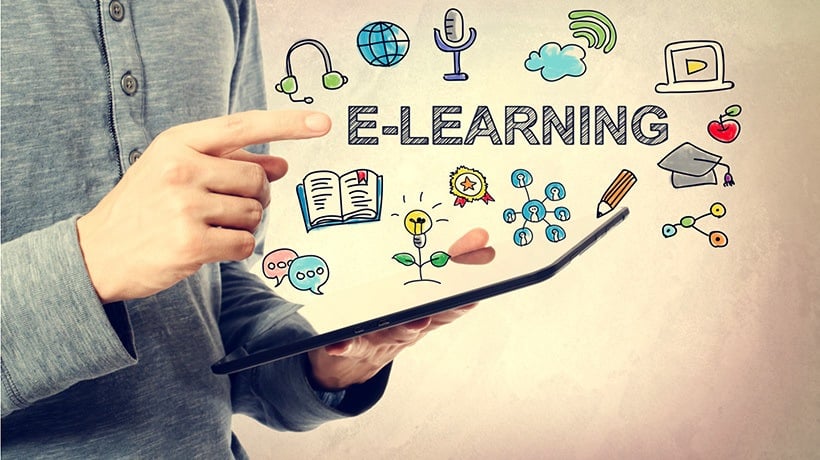The Role of Artificial Intelligence in Shaping E-Learning Experiences
SEO
- 0

In an era where technology permeates every aspect of our lives, education is undergoing a significant transformation. E-learning, or electronic learning, is at the forefront of this revolution, offering innovative ways to deliver education through E-learning digital platforms. This mode of learning is not just a trend but a substantial shift in how knowledge is disseminated and acquired. This article explores the evolution, benefits, challenges, and future potential of e-learning.
The Evolution of E-Learning
E-learning has evolved dramatically over the past few decades. It began with basic computer-based training programs in the 1960s, but the real growth occurred with the advent of the internet in the late 20th century. The development of Learning Management Systems (LMS) like Blackboard and Moodle in the 1990s allowed educators to create and manage courses online.
The early 2010s saw the rise of Massive Open Online Courses (MOOCs), with platforms like Coursera, edX, and Udacity offering courses from top universities to a global audience. This movement democratized education, making high-quality learning accessible to anyone with an internet connection. The COVID-19 pandemic further accelerated the adoption of e-learning, as schools and universities worldwide shifted to online platforms to continue education.
Benefits of E-Learning
Accessibility and Flexibility
E-learning offers unparalleled accessibility and flexibility. Students can access course materials from anywhere in the world at any time, making it easier for working professionals, parents, and individuals with disabilities to pursue education. This flexibility allows learners to balance their studies with other commitments effectively.
Personalized Learning
E-learning platforms often use adaptive learning technologies to tailor content to individual learners’ needs. This personalization allows students to learn at their own pace, focusing on areas where they need improvement while advancing quickly through topics they find easier.
Cost-Effectiveness
E-learning is generally more cost-effective than traditional classroom-based education. It eliminates the need for physical infrastructure, such as classrooms and printed materials, reducing costs for educational institutions. For students, it removes commuting expenses and provides access to a wide range of free or affordable courses.
Diverse Learning Resources
E-learning platforms offer a variety of multimedia resources, including videos, interactive simulations, and gamified content. These diverse materials cater to different learning styles and make education more engaging and effective.
Challenges of E-Learning
Digital Divide
Despite the benefits, e-learning faces significant challenges, the most prominent being the digital divide. Not all students have access to reliable internet connections or digital devices, leading to disparities in educational opportunities. Bridging this gap is crucial to ensuring that e-learning is equitable.
Limited Social Interaction
Traditional classroom settings foster social interaction and collaborative learning, which can be limited in online environments. The lack of face-to-face interaction can lead to feelings of isolation and hinder the development of social and teamwork skills.
Quality and Credibility
The rapid growth of e-learning has raised concerns about the quality and credibility of online courses. Ensuring that e-learning programs maintain high standards and offer recognized certifications is essential for their acceptance in academic and professional circles.
The Future of E-Learning
The future of e-learning looks promising, with continuous technological advancements expected to address many current challenges. Artificial intelligence (AI) and machine learning are set to enhance personalized learning experiences further. These technologies can provide real-time feedback and adaptive learning paths, making education more efficient and tailored to individual needs.
Virtual and augmented reality (VR/AR) technologies have the potential to create immersive learning environments, making complex concepts easier to understand and more engaging. Blockchain technology can be used to secure digital credentials, ensuring the credibility and authenticity of online certifications.
Improving internet infrastructure and providing affordable digital devices are essential steps to bridge the digital divide. Collaboration between governments, educational institutions, and private organizations is vital to ensuring that all students have the tools they need to succeed in e-learning.
Conclusion
E-learning has transformed education, offering unprecedented flexibility, accessibility, and personalized learning experiences. While challenges remain, ongoing innovations and efforts to address these issues will shape a more inclusive and effective future for e-learning. As we continue to navigate the digital age, e-learning stands as a testament to the transformative power of technology in education. It is not just a complement to traditional education but a pivotal component of the future educational landscape.
4o